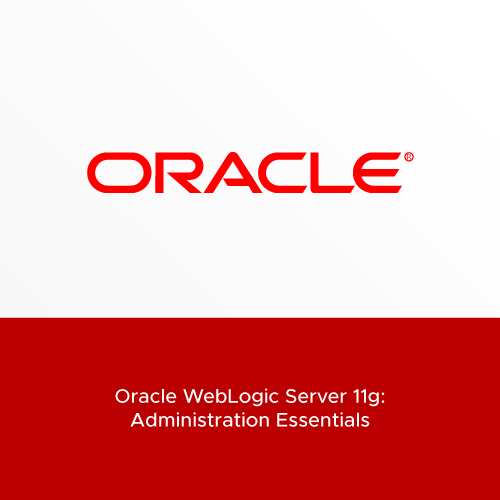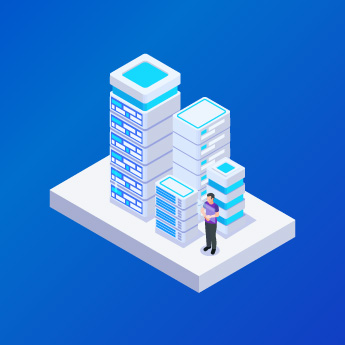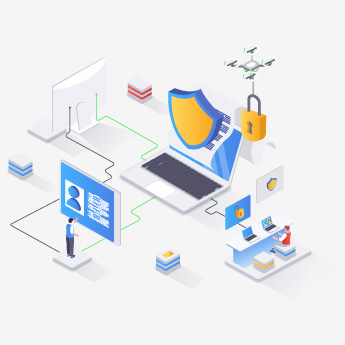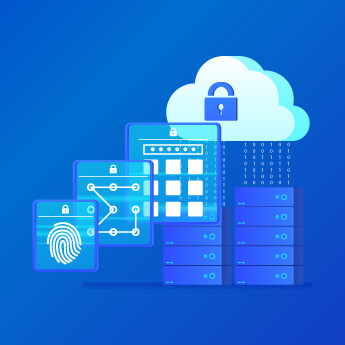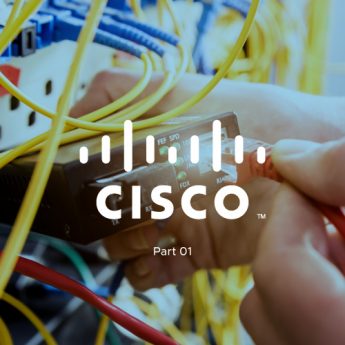– Introducing Oracle Fusion Middleware Platform
• Describing the Oracle Fusion Middleware Environment
• Describing How WebLogic Server Supports Various Fusion Middleware Suites
• Describing How Various Fusion Middleware Suites Augment the Functions of WebLogic Server
– Defining Java Enterprise Edition Terminology and Architecture
• Explaining the Motivation Behind Distributed Systems
• The Major Components of the Java Platform Enterprise Edition 5 (Java EE) Specification
– Installing Oracle WebLogic Server
• Explaining Oracle WebLogic Server Installation Steps
• Installing WebLogic Server Using Both the Graphical User Interface (GUI) and Command Line
• Describing the Organization and Contents of the WebLogic Server Directory Structure
• Navigating the WebLogic Server Online and Offline Documentation
-Configuring a Simple Domain
• Describing the Common Elements in a WebLogic Server Domain
• Describing how Domains are Used in the Enterprise
• Comparing Administration and Managed Servers
• Configuring a Domain
• Describing the Organization and Contents of the WLS Directory Structure
• Describing the use of WLST Offline to Manage Domains
• Creating a Simple Domain with One Managed Server
• Checking the Port Numbers that are Used for Components
– Configuring a Domain Using Templates
• Describing the Internal Process Used to Create or Update a Domain Using a Template
• Describing the Process of Extending a Domain Template
• Explaining the Domain Templates Provided for Setting up JDeveloper, SOA, and WebCenter
– Using Administration Console and WLST
• Identifying Dynamic and Nondynamic Attribute Changes in the Administration Console
• Customizing Monitoring Tables Within the Administration Console
• Using the WebLogic Scripting Tool (WLST) Command-line Utility
• Invoking WLST and Navigate Through the Domain Structure
• Describing How Change Management is Performed Internally Using Java Management Extension (JMX) and Mbeans
-Configuring Managed Servers
• Configuring Managed Servers Using the Administrative Console
• Configuring Managed Servers Using WebLogic Scripting Tool (WLST)
• Starting Managed Servers
• Shutting Down a Server or an Entire Domain Using WLST or the Administrative Console
• Configuring Managed Servers on a Computer Separate from the Sdministration Server
• Explaining Administration and Managed Server Independence (MSI)
– Configuring Node Managers
• Defining the Oracle WebLogic Server Machine
• Configuring a Machine and Assign Servers to it by Using the Console and WebLogic Scripting Tool (WLST)
• Explaining the Node Manager Architecture
• Describing the Organization and Contents of a Node Manager Directory Structure
• Configuring, Starting, and Stopping Node Managers
• Describing How to Start and Stop Procedures
– Viewing and Managing Logs in Oracle WLS Environment
• Defining and Configuring Server and Domain Logs
• Viewing and Interpreting the Format of Domain and Server Log Files Using the Administration Console
• Configuring Server Standard Output Settings Using the Console
• Describing How Applications Can Integrate With WLS Logging Infrastructure (Apache commons, log4j)
• Accessing Online Log Message Catalogs
• Creating and Applying a Log Filter Using the Console
• Configuring Log Filter Expressions
– Deployment Concepts
• Contrasting Autodeploy With Manual Deployment
• Configuring and Deploying Web Applications Via the Administration Console, Command Line, and WLST
• Configuring Deployment Descriptors
• Testing Deployed Applications
• Describing the Role of Web Servers
• Tracing a Typical Web Interaction Flow
• Contrasting Static and Dynamic Content and Deployment
• Front-end Deployed Applications With a Web Server
– Deploying Java EE Applications
• Describing Java EE Web Applications
• Describing Enterprise Deployment Architectures
• Packaging Web Applications in Several Forms
• Defining Web Application Structure and Web Application Archive
• Explaining Why WebLogic Augments Standard Java EE Deployment Descriptors With weblogic*.xml Files
• Looking at Deployment Descriptors web.xml and weblogic.xml
• Describing URLs and Web Applications
– Advanced Deployment
• Configuring an Application for Multiple Development Environments
• Creating a Deployment Plan
• Staging a Deployment Plan
• Using Production Redeployment
-Understanding JDBC and Configuring Data Sources
• Configuring JDBC and JDBC Data Sources
• Configuring Data Source Scope
• Contrasting Two-tier and Multi-tier JDBC Architecture
• Configuring a Connection Pool
• Describing How Data Sources are Used
• Deploying JDBC Resources to a Target
• Explaining the Components of JDBC URLs
• Monitoring and Testing a Data Source
-Setting Up Java Message Service (JMS) Resources
• Describing JMS
• Describing How Oracle WebLogic Server JMS is Implemented
• Configuring JMS Server
• Configuring Connection Factories
• Configuring Queues and Topics
• Configuring Persistent Messages
• Deploying an Application that Uses JMS
• Monitoring JMS Resources and Messages
– Introduction to Clustering
• The Benefits of Oracle WebLogic Cluster
• Basic Cluster Architecture
• Multitier Cluster Architecture
• Communication Among Clustered Server Instances
• The Key Criteria for Selecting Suitable Cluster Architecture
– Configuring a Cluster
• Preparing Your Environment for a Cluster
• Creating and Configuring a Cluster
• Adding Servers to a Cluster
• Starting Up and Shutting Down Clustered Servers
– Managing Clusters
• Deploying Applications to a Cluster
• Describing the Replication of a Session State in a Cluster
• Configuring Replication Groups
• Configuring In-memory Replication
• Configuring Java Database Connectivity (JDBC) Replication
• Configuring File Replication
• Configuring a Multitier Cluster for Enterprise JavaBeans (EJB) Applications
– Security Concepts and Configuration
• Using the WebLogic Server (WLS) Security Architecture
• Configuring Security Realms
• Configuring Users and Groups
• Configuring Roles
• Configuring Policies
• Configuring Protection for Web Application Resources and EJBs
– Protecting Against Attacks
• Describing the Process of Configuring Secure Sockets Layer (SSL)
• Using the Keytool Utility to Configure Keys and Obtain Digital Certificates
• Configuring SSL for the WLS Server
• Configuring Countermeasures for Some Web-based Attacks
– Backup and Recovery Operations
• Recommending a Backup and Recovery Strategy
• Performing a Full Offline Backup and Recovery
• Performing an Online and Offline Domain Backup
• Performing an Offline Domain Recovery
• Performing an Instance Home Backup and Recovery

